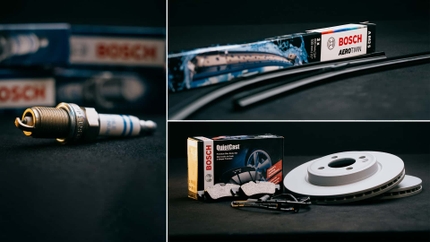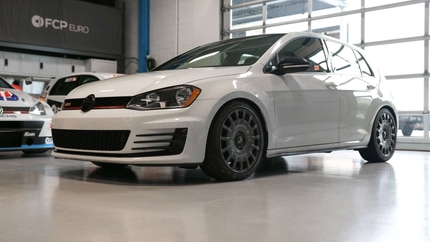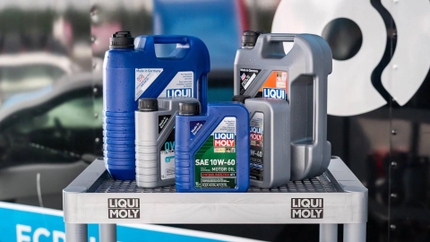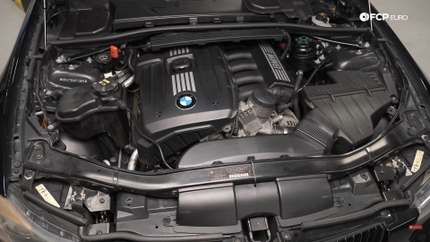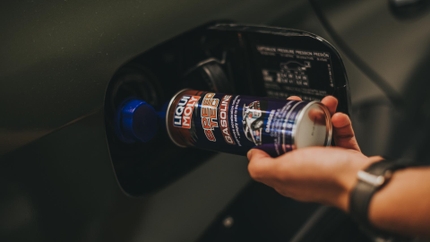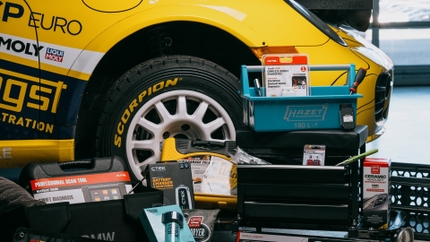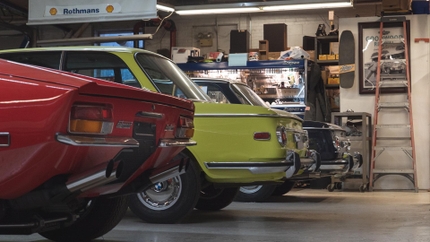- 04/04/2025
- 14 Min Read
- By: Christian Schaefer
The Best VW Mk7 GTI Mods For The Street Street
Volkswagen’s famous hot-hatch has always been a stellar blend of comfort and fun, but the Mk7 meets that intersection with an ultra-reliable drivetrain, sizeable interior space, and handling characteristics to make M3 owners sweat. However, like any modern performance vehicle, the aftermarket is all over the Mk7. Since its debut, the Mk7 has been a popular platform for modifications, especially considering many of its components are shared between other Audi and Volkswagen products. With so many different ways the Mk7 can be improved, it can be a little challenging to understand what you should do and in what order you should do it, so we’re here to help. These are the best ways to modify your Mk7 Golf GTI while retaining its best daily driver qualities.
Simple Bolt-On Mods
Whether you've just bought your GTI or are looking to improve upon it after years of DD service, these are the easy ones to start with. Not all are cheap, but they'll offer decent bang for your buck and support the more serious modifications should you choose that path.
Mk7 GTI Intake
Fitting a performance-focused intake has been a basic modification for any car since the original hot rods. More air means more fuel, and their combination means more power; it’s just science. The stock Mk7 GTI engine air intake is a bit restrictive, but aftermarket intakes offer better airflow, which means relatively inexpensive horsepower.
Just about everyone and their cousin makes a Mk7 GTI intake, so you’ll have plenty of choices when it comes time to buy. The lower end of the price spectrum sits around the $370 mark, with Integrated Engineering, 034Motorsports, and aFe hovering around there. Cheaper options are available, but they often do more harm than good. More air is the goal, but it needs to be cold. The three companies listed above all offer some shrouding for their filters, while lesser-priced options stick a nearly naked filter into the hot engine bay.
Typically, those around that lower-end price range feature plastic and aluminum construction. Neither of those materials is bad and allows better-designed products to compete at a lower price point. However, if you’re looking for a visual improvement and a performance gain, you’ll want to purchase a full-carbon intake.
A carbon Mk7 GTI intake will be a bit lighter than a plastic/metal intake, but its performance capabilities should be about the same. Pair them with a good tune; they should net in the 10-15 horsepower range. But, for nearly double the price of the non-carbon pieces, you can open your engine lid to beautiful engineering that’ll wow you every time you look at it. AWE Tuning, 034Motorsports, and Unitronic offer carbon pieces, though others do.
Regardless of your choice, we can’t recommend pairing it with a tune enough. The engine computer must know that it can take advantage of better parts to achieve its maximum potential.
Mk7 GTI Exhaust
An aftermarket exhaust is one of the more fulfilling modifications you can make to your GTI. Reduced pressure behind the turbocharger will improve power, stainless-steel construction will reduce weight, and the reduced muffler baffling will enhance sound quality. Although the exhaust has a few components, the most significant portion follows the downpipe and is colloquially called the “cat-back” section. You’ll find them when searching for an “exhaust” online.
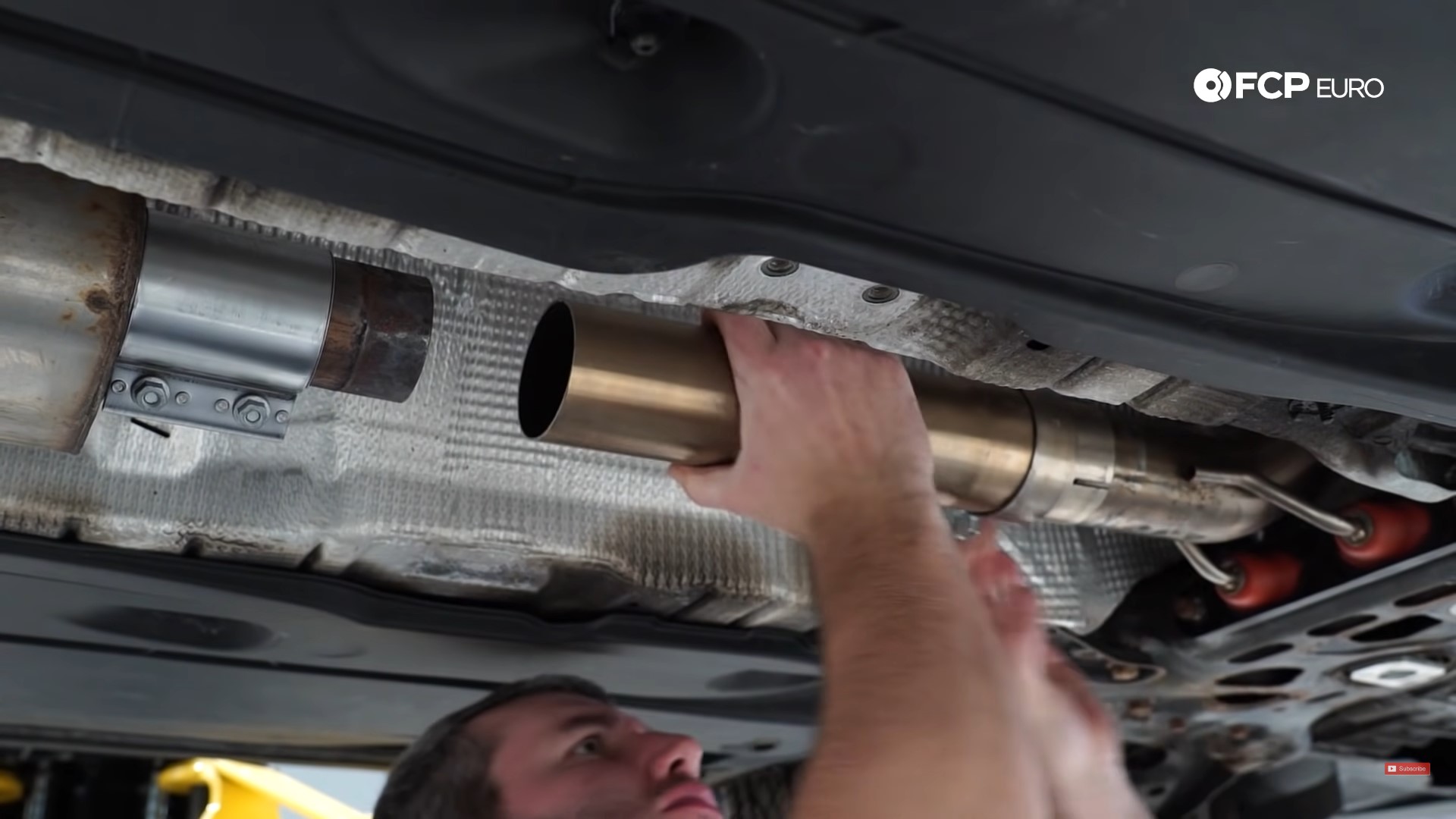
A cat-back exhaust is another of the most popular upgrades one might make to their GTI. Options are available through many prominent names and a smattering of VW-focused ones. Each system will vary in look, sound, and weight, none of which you can experience well through the computer. Sound clips do work pretty well, but we recommend finding a local shop or owner’s group and hearing those systems in person before purchasing.
Before you look, let us give you an idea of the landscape. Every big name in the VW tuning scene or major exhaust manufacturer makes a Mk7 GTI exhaust. They include AWE Tuning, APR, Borla, Supersprint, and Cobb Tuning. Each system is made of T304 stainless steel, and a single muffler just before the single exhaust pipe splits into its two outlets. Aftermarket Mk7 GTI exhaust pipe diameters will typically be 3” through the muffler before splitting into two 2.5” sections out to the tips. Others, like the Supersprint and the AWE Tuning pieces, will be slightly different. The former is a complete 2.75” system to the end, while the AWE track exhaust shrinks from 3” to 2.25” after the split.
Once you install your Mk7 GTI exhaust, the results are much the same as the intake. Pairing your new mods with an ECU tune is the best performance option. Letting the engine know it can breathe better will give you much more power than allowing it to continue believing it was fitted with a restrictive system.
Mk7 GTI ECU Tune/DSG Tune
Once you’ve installed your Mk7 GTI mods for better performance, you’ll want to maximize their gains with a new ECU tune. Volkswagen sets up all of its GTIs with conservative fuel and ignition curves to prevent any potential engine damage by owners. Cars end up in different areas of the world with different fuel availability, so the factory mapping is softened for that. However, you know what fuel is around you and what your mods are, so you’ll be able to set up the engine computer specifically for that.
Choosing a tune for your Mk7 GTI leads you to two distinct choices: flash or piggyback. The traditional method is through a flash tune; a company like Integrated Engineering, Unitronic, or APR has a pre-made file that you load onto your ECU, and you’re off to the races (possibly literally) with a significant power increase. Under “stage 1” flashes, aftermarket intakes and exhausts aren’t necessary, and the power gains are around 80 horsepower and 80 lb-ft of torque at their peak. Pair that tune with an aftermarket intake and exhaust; the gains will jump slightly. However, there isn’t much else to do once the tune is installed. Bolting on more bits will allow you to head to “stage 2,” but without much connection to your specific modifications. Off-the-shelf tunes are great, but sometimes you need something built around your specific mods.
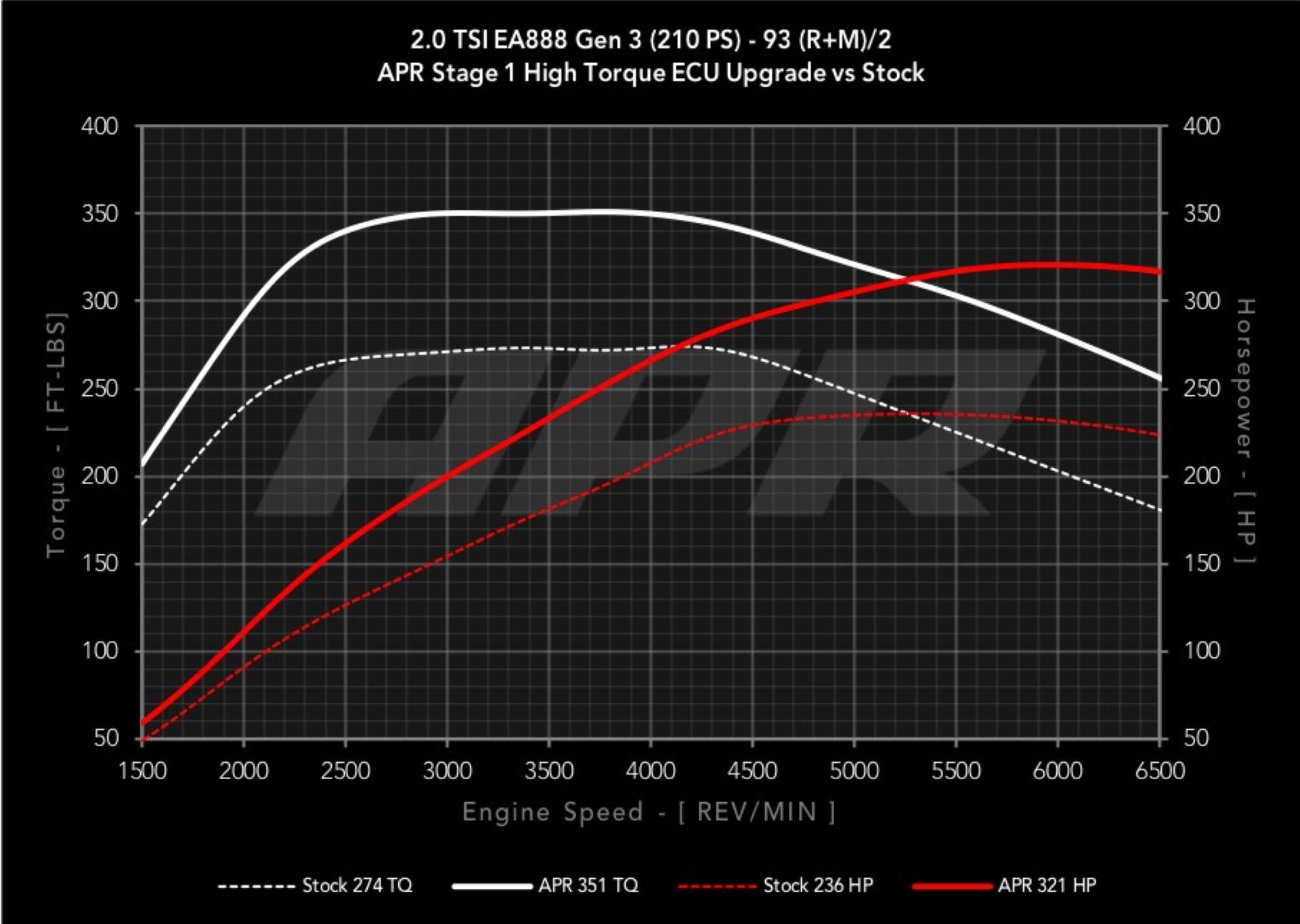
The other method is through a piggyback tuner like the JB4 from Burger Motorsports. Instead of rewriting the ECU, the JB4 taps into the GTI via the OBD2 port. While advertising the same gains as the flash tunes, the JB4 offers more than just performance improvements. As a piggyback unit, the JB4 can record your 0-60 times, act as a code reader/scanner, can store up to 8 maps for different performance on the fly, and can be paired with Burger’s BlueTooth connect kit so you can monitor your GTI’s health from your phone as you drive. But the most beneficial of the JB4, and even Cobb's Accessport, is the ability for a custom tune. Both allow you to take your Golf to a specialty shop and have them use a dynamometer to perfectly suit your ECU to the modifications you have.
However, once you've chosen your engine tune, there is still more you can do. Both transmissions will experience clutch slip with increased power, but DSG owners can eliminate that with some extra software fiddling. 034Motorsports, Integrated Engineering, United Motorsports, APR, and Unitronic offer their takes on revised DSG mapping with the same benefits. Rewriting the TCU removes the factory “torque limiter” from the gearbox and increases clutch pressure to handle the increased torque provided by performance mods. It’s a great pairing for any modified GTI, though its benefits aren’t strictly performance-related. Each tune also addresses the sometimes clunky DSG to smooth out gear changes, reduce gear hunting, and improve the response when moving off from a standstill.
Mk7 GTI Rear Sway Bar
With all the focus on horsepower so far, you must remember that performance doesn’t strictly mean grunt. The Mk7 GTI’s MQB-derived chassis is the best to have ever come from Volkswagen, but it isn’t without its areas of improvement. The easiest way to help dial out some understeer for better cornering balance is with a larger rear sway bar.
Volkswagen’s XDS torque vectoring is largely responsible for the lack of understeer in the Mk7 GTI. However, on the track, its constant use of the brakes will cause accelerated wear, something you really don’t want on the track. Installing a larger rear sway bar will reduce the roll at the rear, keeping the car flatter through the corners. That'll prevent the weight loss from the front inner tire, allowing it to grip the road better and rely on the XDS less.
As with the other products, the rear sway bar is available through several manufacturers, so the best way to decide which is right for you is through the size. A stiffer rear bar is better, but there is such a thing as too stiff for the street. Owners tend to stick around the 25/26mm range, but individual experiences will differ based on the road conditions near you. 034Motorsports, Eibach, and H&R all offer bars within that size range and carry a name you can trust.
If it’s within your budget, we recommend you grab a complete kit that includes stiffer bushings and aftermarket endlinks. The stiffer bar puts an increased strain on the original components, which will cause them to wear quicker than intended, but the aftermarket bits included in the kit will be up to the task. If not a kit, then piece one together on your own.
Involved Bolt-On Mods
With the easy bits out of the way, it’s time for the tougher stuff. Every Mk7 GTI mod here is completely doable at home in your garage or driveway, though some will be more challenging than others. The costs are also higher, but their installation allows for much more reliable horsepower and improved chassis control.
Mk7 GTI Intercooler
Replacing your Mk7 GTI intercooler is critical for improving performance, but it also comes with an improved reliability factor over the OE components. The intercooler’s job is to cool the hot air from the turbocharger so that it’s more oxygen-dense when entering the combustion chamber. In truth, this mod is likely in the “simple mods” section for other vehicles, but the entire front end of the GTI has to come off to replace its intercooler, so the “involved mods” section is where it must go.
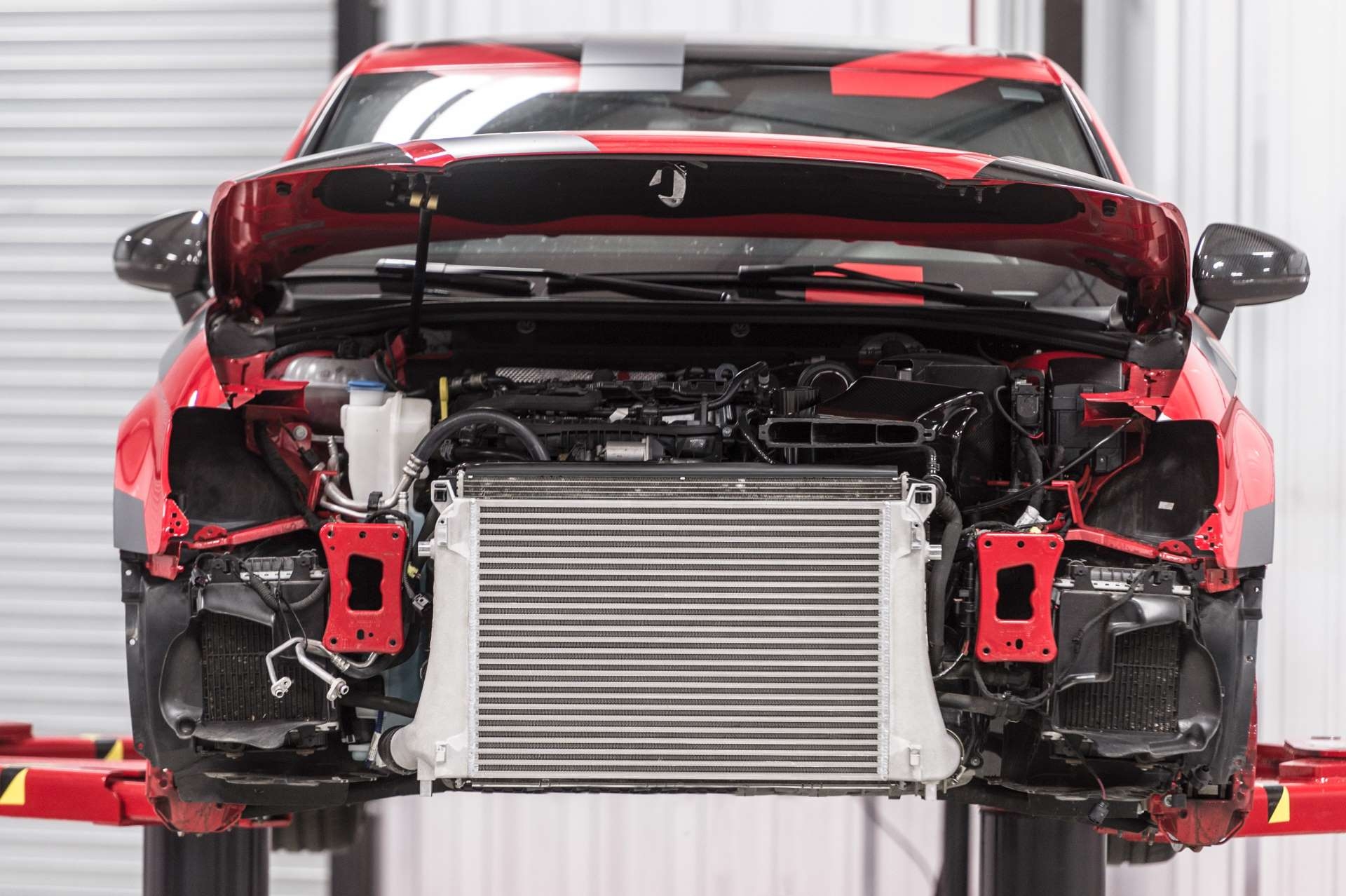
The intercooler sits between the A/C condenser and the radiator at the front of the vehicle for maximum airflow. However, its plastic end-tanks and relatively small core mean it struggles to flow efficiently above stock boost pressures. Aftermarket intercoolers are designed specifically for power with CFD-tested end-tanks to eliminate bottlenecks, and larger cores improve flow volume and cooling capacity. The colder the air enters the engine, the more power it’ll make.
Choosing an intercooler leaves you with plenty of options with varying pricing due to size differences. The offering from Burger Motorsports is on the lower end of the pricing spectrum. At just under $500, they claim gains of 10 wheel-horsepower and a 60% gain in core volume. Nearly every other option sits above the $600 mark, topping a bit over $1000. Those offerings, from Wagner Tuning, CTS Turbo, Unitronic, and Mishimoto, all offer the same product with slightly varying end-tank designs. Again, this is a case of doing some digging to find out where the GTI-owning collective has put their trust.
Mk7 GTI Downpipe
The stock Mk7 GTI downpipe is capable of more than stock power but eventually chokes the EA888 with its sizeable catalytic converter. A cat-back exhaust helps with the exhaust flow, but an aftermarket downpipe is where you'll see the biggest gains from the better flow. How much flow you get will depend on whether or not you still want a catalytic converter in your exhaust system.
In every aspect, a catalytic converter is a restriction that hampers power. However, most states require them, as does the engine computer. We’d recommend a catless downpipe to any track build, but a street car fitted with an aftermarket high-flow catalytic converter will still generate big power numbers without the harmful noise and pollution effects.
Even with a catted downpipe, you should expect much better performance across the rev range, with the largest torque gains coming down as low as the turbocharger spools. The lack of exhaust restriction allows the turbo to spool much quicker, significantly reducing lag and producing a bump in power that’ll carry to redline.
For a stock Mk7 GTI IS20 turbocharger or the Golf R’s IS38, nothing more than a 3” downpipe is needed for the street. Almost every high-flow cat in that size downpipe is a 200-cell unit, far less restrictive than the original 500-600-cell cat. They should still pass a standard emissions test without an issue at that density.
You can find cats like those from anyone, including 034Motorsports, APR, Unitronic, and Milltek, among others. Each is put together just a bit differently, so do some digging through forums or ask your local VW tuner which is liked best. You could always pair the downpipe manufacturer with your exhausts for a guaranteed fit, though mixing the brands shouldn’t be an issue.
Mk7 GTI IS38 Turbo Swap
Installing aftermarket parts always comes with the possibility of poor fitment, and the only way to avoid that altogether is by using Genuine, OE, or OEM parts. For all intents and purposes, the turbocharger is a bolt-on performance part, and the GTI’s EA888 can handle more turbochargers than its stock IS20. Luckily for Mk7 GTI owners looking for great performance mods, the Golf R’s larger IS38 turbocharger is a direct swap-on.
Installing the IS38 is a tough job requiring time and patience instead of money and special skills. Getting to the Mk7 GTI turbocharger means removing the entire exhaust system and a good portion of the intake, so it makes sense to do a few other upgrades with the new turbocharger if it’s within the budget. However, all the physical parts required for the job are the turbocharger and its associated gaskets; you can keep your stock intake and exhaust components if necessary, although we don’t recommend that.
With the IS38 equipped on your Mk7 GTI with the other bolt-on performance parts listed here, you can expect well above 300 wheel-horsepower running through your front wheels. A remapped ECU is necessary here as the IS38 reacts differently to and outperforms the IS20 everywhere. DSG cars should also invest in a TCU tune, and manual-equipped GTIs must look into a new clutch.
Other companies offer larger bolt-on turbo kits, but those come with different requirements in the form of significantly more aftermarket components than those listed here. The IS38 provides a more-than-modest boost while retaining the factory fitment and reliability your stock GTI already has.
Mk7 GTI Coilovers
With all the power under the sun flowing through the MQB chassis, your Mk7 GTI will need some help in the suspension department. As you attempt to take the 435i rolling next to you on the highway to Gapplebee’s, your springs and dampers will squat hard and take the weight off the front wheels, causing them to lose traction. Stiffening the springs and dampers to cope with the increased engine performance is your best bet to solve that issue.
You can stiffen the suspension in a few different ways, but the most efficient is through a set of coilovers. The springs and dampers work in harmony to control the chassis over bumps and through the corners. In stock GTI form, they provide a sporty but comfortable ride suitable for the toughest of pot-holed city streets; however, they do leave performance desired when the going gets extra twisty and powerful. Popping on a set of coilovers will add back a sense of control while firming up the car to improve performance at the limit for a sacrifice of comfort on the street.
OE damper and springs are set up to match each other perfectly, but aftermarket springs and dampers aren’t. Coilovers, on the other hand, have their spring and dampers developed together for the best performance possible. In many cases, they also feature damper adjustment that allows you to alter the compression and rebound settings to your liking.
The factory DCC may be the only exception to this section, as the adaptive suspension can likely handle the forces from your modded GTI. However, Bilstein makes a set of coilovers that precisely match the DCC to keep its adaptive qualities while providing a stiffer, more controlled ride. Without DCC, you’re looking at various manufacturers and prices, from the lower-end BC Racing products to the H&Rs at the top of the range. Between them are offerings from Sachs, the OE Mk7 GTI suspension provider, Bilstein, and KW. Each of them will have slightly different valving and spring rates, so no two coilovers will feel the same.
Like with the exhaust, you should experience these before purchasing through someone else’s GTI. Otherwise, head over to the forums to find out what most enthusiast owners prefer for their Mk7 GTI coilovers. You’ll have a lower and stiffer ride any way you choose, so it’s up to you to determine how low and stiff you want to go.
Reliability Mods
Although the most fun mods make more horsepower, the best ones ensure consistent, trouble-free performance. As you upgrade engine components to raise your Mk7 GTI’s power output, the OE supporting components will be pushed beyond their normal operating range. At best, they wear faster and let you know, but at worst, they cause problems that prevent you from driving. Remember these mods as you upgrade other areas, and throw one in when it makes sense.
Mk7 GTI Coil/Plugs
As you squeeze more power from the EA888, you're going to need a more durable spark. Igniting that fuel/air mixture is the spark plug and ignition coil, the main components of an ignition system. But, like everything else on a car, they’re generally rated for the engine’s stock power output and not much more.
Switching to a stronger coil and a colder spark plug is highly recommended once you’re past the “stage 1” phase. Nearly doubling the factory output can heat the cylinder beyond its ideal operating range, so a colder plug is needed. A colder spark plug will provide a quicker spark and better transfer of heat to the cylinder head.
As far as plug choices go, many owners stay under the VAG umbrella and put in Audi RS7 plugs. They’re in the proper heat range and get the job done. Upgraded coils are a bit more debated, with most claiming that the stock coils are fine unless you’re a race car or pushing beyond bolt-on power figures. APR makes stronger black, red, and blue coils, so they can be an additional dress-up piece.
If you’re on the fence about whether or not to change your plugs and coils, talk to a tuner you trust. Their experience with tuning in general and, hopefully, their expertise with the EA888 will give you the absolute guidance you need.
Mk7 GTI Engine/Transmission Mounts
The Mk7 GTI uses the same engine mounts as nearly every other model built on the MQB platform. That means the lowliest Golf shares its components with the hottest one; not the best recipe for success. Through aggressive driving and increased power, many owners have reported engine mount failures well under the mileage or timespan it would typically take one to wear and fail, so the best you can do to prevent that is to throw in an aftermarket set.
034Motorsport’s Density Line mounts are some of the most popular choices for the Mk7 as they’ve been around for decades over several generations of GTI. Sharing the same design as the factory pieces, they use a stiffer, non-fluid-filled rubber for the bushing for about a 25% increase in damping. Revo and CTS Turbo are the only others to offer slightly more rigid, street-oriented performance mounts with similar designs to the 034Motorsports pieces. These are just the lower engine and transmission mounts, though. The upper dog bone is its own piece.
Another popular fix is the bushing inserts. The stock bushings have large gaps in their rubber that allow for significant movement. Several companies now produce inserts that fit tightly in those gaps and prevent excessive play. On the positive side, the inserts are much cheaper than new aftermarket bushings, coming in at under $50 a piece; however, they won’t have the same effectiveness as a new bushing and won’t prevent the original from eventually wearing out.
Choosing a dogbone or torque arm, whichever you prefer to call it, will wrap up the necessary mounts. These also offer the choice between inserts and billet-aluminum aftermarket mounts for plenty of choice for you. 034Motorsports and APR are the more popular choices, but Whiteline is also an option. Tossing in one of the billet aftermarket mounts with the insert will ultimately shore up the drivetrain mounting to provide crisper shifts and better power transfer for a smoother ride. Once they’re installed, you’re all set to make plenty more reliable horsepower.
Mk7 GTI Steel Oil Pan/Skid Plate
Modern plastics have been a wonderful development for manufacturers as their light and strong properties have simplified automotive component manufacturing. Like other automakers, VW is no stranger to plastics and has begun to use them extensively throughout its lineup. In many places, the use of plastic has reduced costs, weight, and complexity in critical areas, though not all have been complete beneficiaries of petroleum-based products.
Arguably the most vulnerable spot on any engine is its oil pan, assuming it uses a wet sump like the GTI’s EA888. Traditionally, oil pans are steel or aluminum pieces, but the Mk7 GTI uses a plastic one. The plastic oil pan has become more common practice in the last decade, so it’s something most people live with and aren’t affected by, but it is a potential failure point on a modified GTI; ask us how we know.
Luckily, older VW products used the EA888 with a steel pan that is still readily available. We offer a kit that includes the pan, oil level sensor o-ring, bolts, and sealant required to install it. Swapping to a steel pan eliminates the dangers of an easily cracked plastic pan as the metal piece dents and deforms before a complete break. The extra bit of toughness is a cost-effective and simple way to bolster your peace of mind. However, if that’s not enough, you can also pick up a skid plate.
There are two Mk7 GTI skid plates available that will provide increased protection to the oil pan. The first is the OE Golf Alltrack skid plate, made from GFRP and Kevlar; it’s a beefed-up version of the stock plastic piece. Protection should be much improved, and it’ll cover more of the bottom of the car without affecting the DSG’s cooling abilities. If that’s not to your liking, then you’re looking at an aftermarket aluminum piece. Four Rings Auto offers a 3/16” thick aluminum plate that will provide even greater protection than the Alltrack piece.
And with that, you should have a path toward a safe and powerful Mk7 GTI. Going beyond these modifications can cost serious time, money, or effort and is likely a plan best developed with an expert in performance engine building. For more DIYs, guides, and other great content, follow along with our DIY Blog and subscribe to our YouTube channel!


